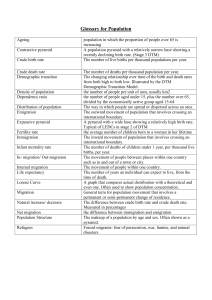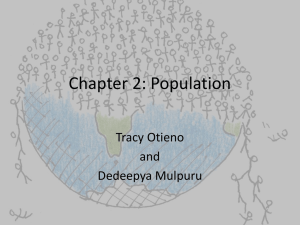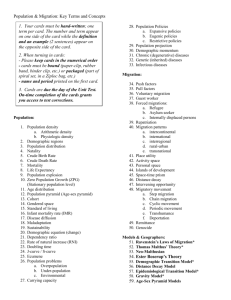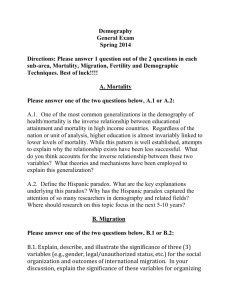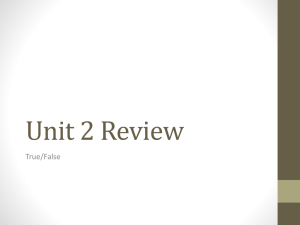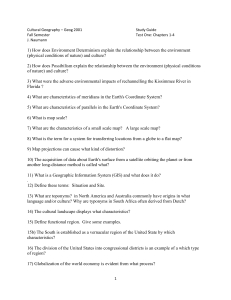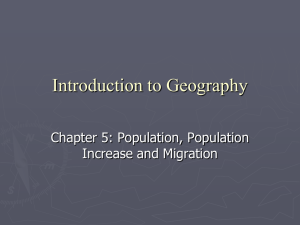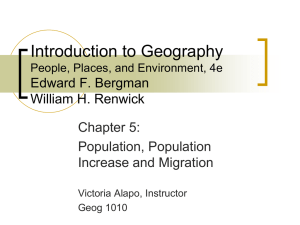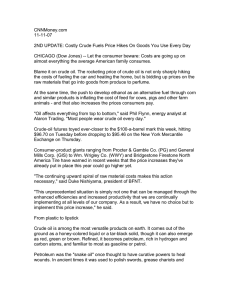reviewforaphumangeography
advertisement
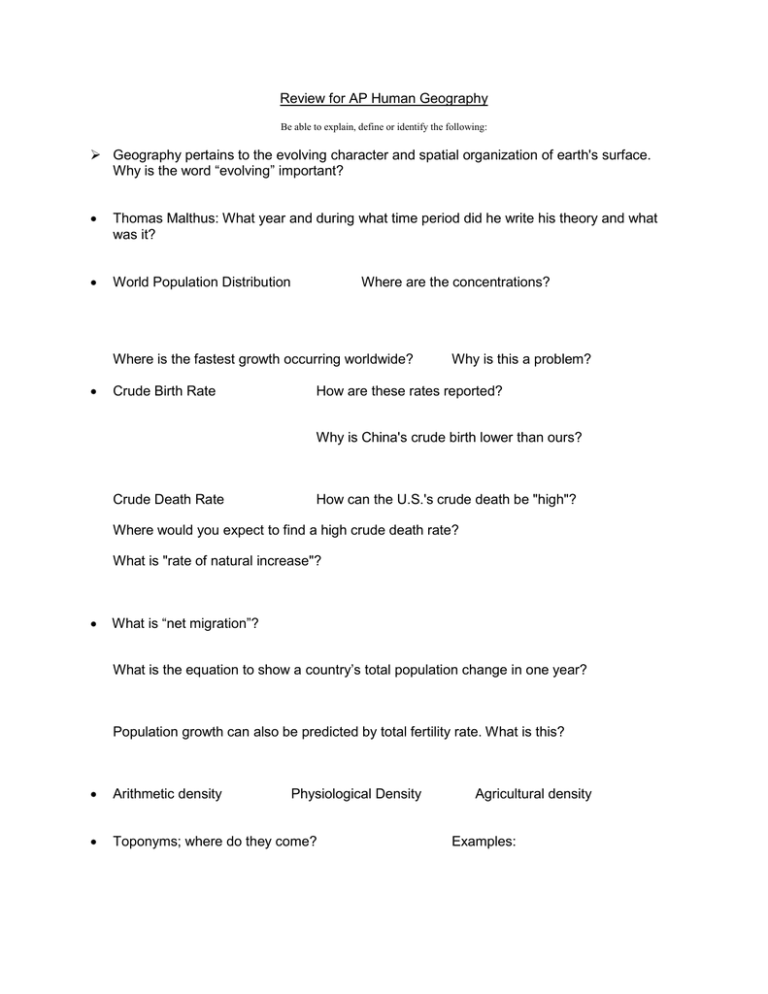
Review for AP Human Geography Be able to explain, define or identify the following: Geography pertains to the evolving character and spatial organization of earth's surface. Why is the word “evolving” important? Thomas Malthus: What year and during what time period did he write his theory and what was it? World Population Distribution Where are the concentrations? Where is the fastest growth occurring worldwide? Crude Birth Rate Why is this a problem? How are these rates reported? Why is China's crude birth lower than ours? Crude Death Rate How can the U.S.'s crude death be "high"? Where would you expect to find a high crude death rate? What is "rate of natural increase"? What is “net migration”? What is the equation to show a country’s total population change in one year? Population growth can also be predicted by total fertility rate. What is this? Arithmetic density Toponyms; where do they come? Physiological Density Agricultural density Examples: Cultural ecology……this is the study of the relationship between the earth and humans; the outcome of this relationship is the cultural _____________ Related terms: possiblism and environmental determinism. Comparing the types of religious architecture Latitude and longitude; what all can they tell us? Chain migration, brain drain, internal migration Map projection and distortion Map scale Robinson projection Mercator projection Carrying capacity; what is it? Demographic Transition Model Birth Rate Death Rate Growth Revolution/Outcomes? Stage 1 Stage 2 Stage 3 Stage 4 Where are cultural centers (famous holy sites) for Hindus, Jews and Muslims? What has been the significance of rivers in world history for early urban development? Discuss three different examples. Definitions, examples of, and differences between… Folk culture Popular culture Population distribution in the U.S. Are we more urban or rural? Since when? However, why was it not until after World War II that suburbia started mushrooming? What does “metropolitan” mean? Where would you find these products being raised in the U.S.? In the world? Cattle? Cotton? Rice? Tobacco? Sheep? [These are examples of formal regions, because you can show on a map where the product is dominant.] Examples of Transnational Corporations… These corporations either export U.S. goods and services or import other countries' resources. In what ways do transnational corporations "look out for themselves"? Where were the early cultural hearths? In the cultural landscape, how can religion affect food production? In the cultural landscape, how can the environment affect housing types? What is a Cultural Trait? Cultural Artifact? Nation-state definition and examples: What is a Formal region Clashes between groups: What are the causes? What data and inferences can population pyramids show? a Functional region? a Vernacular region? Guest workers in the U.S., in Europe and elsewhere…where do they come from? How are they treated? Push /Pull Factors-Know the difference Sun Belt vs. Rust Belt: Why is the former gaining population; why is the latter losing population? What are the political implications? Review the concepts behind time zones? When? Why? How many and where? Relocation diffusion Expansion Diffusion Hierarchical Contagious Stimulus Why does language extinction happen? What is a language isolate? What is the difference between acculturation and assimilation? What's the difference between a reference map and a thematic map? Terms to know: Review the difference between colonialism and imperialism. What is "self-determination"? Are there still forced migrations? Examples: Migration-Chain, Voluntary, Gravity Model Ernst Ravenstein’s law of migration? Friction of distance? What are examples of the "parts" of world religions? Branches Denominations Centripetal force Centrifugal force Distance Decay Examples: Term to know: “Diaspora” Sects What's the difference between a universalizing religion and an ethnic religion? What is GIS? What is a census tract? How does movement spread culture? Relationship between patterns of human settlement and natural disasters. What is GPS? Examples of uses… What is the connection between census data and politics?


